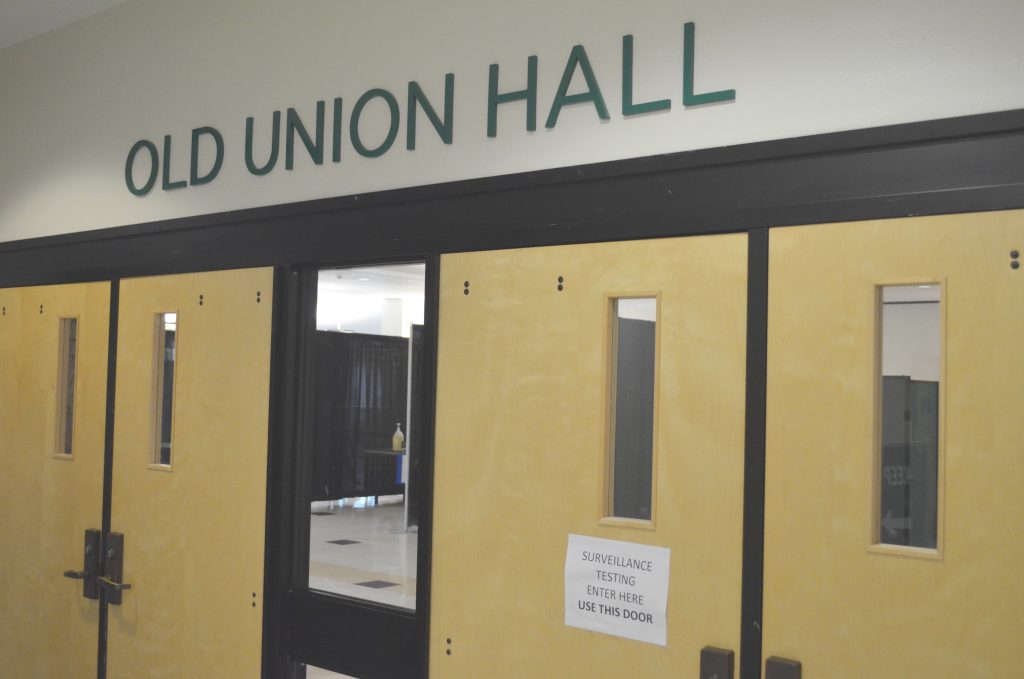While universities across the nation are closing due to rises in COVID-19 cases, Binghamton University is attempting to prevent such a scenario by ramping up its efforts to test larger portions of the student body.
On Aug. 26, BU President Harvey Stenger announced during a press conference that surveillance testing will begin Sept. 2. Surveillance testing, which has been used on other State University of New York (SUNY) campuses like SUNY Oneonta, University at Albany and SUNY Plattsburgh, is designed to randomly select students to get tested for COVID-19 and give an estimate of infection rates on campus. Recently, SUNY Oneonta suspended in-person classes for two weeks following the spike of COVID-19 cases detected from surveillance testing, allowing the campus to prevent any further spread of the virus.
According to an Aug. 31 B-Line announcement, around 50 to 100 individuals are going to be tested per day at Old Union Hall, consisting of both undergraduate and graduate students, residing on and off campus. The University intends to increase its testing to around 200 students per day, with the goal of testing 1,000 students per week. The purpose of these tests is to allow the campus to quickly identify and minimize any spread of the virus.
BU Associate Vice President for Student Affairs Johann A. Fiore-Conte, wrote in an email about the risk assessments the University will use to determine if an outbreak will occur.
“Some will be tested to meet external requirements (e.g. athletes) and some will be selected based on risk assessments,” Fiore-Conte wrote. “Risk assessments will consider factors that make it more likely that a student has been in contact with larger groups of people. Collectively, the various methods are intended to obtain a representative selection sample and to be effective at the early detection of any outbreak.”
Risk assessments will involve students who are more involved on campus and in extracurricular activities like members of fraternities, sororities and societies. It is meant to look at likely places where new cases may occur or start in order to curb any possible outbreaks easier and earlier.
The University added possible repercussions for students who may try to avoid getting tested for the virus whenever they get selected. According to the B-Line, multiple failures to show up during an assigned test may lead to disciplinary action including loss of housing, loss of access to campus or a complete suspension of the student from the University.
Along with the surveillance testing, contract tracing will be in place to locate other possible students that may have been in contact with a person who tested positive. Fiore-Conte wrote that this process is a challenge that both the University and the local government have undertaken.
“All contact tracing is done at the direction of the Broome County Health Department,” Fiore-Conte wrote. “We have and continue to work closely with them to support the additional demand created by the arrival of students. We have identified additional contact-tracers who have been trained per county requirements and are part of the county contact-tracing network.”
In accordance with New York State Gov. Andrew M. Cuomo, if a college campus reaches 100 confirmed cases or five percent of the campus’ population tests positive, all in-person activities must be suspended for two weeks and moved to remote learning. Following the two weeks, campus officials will reassess with the local government if the virus can be contained again for in-person teaching.
Samantha Chang, an undecided freshman, believes surveillance testing is effective for the school to deal with this health crisis.
“It is better than getting all of us to be tested at the same time all at once,” Chang said. “It will still give an idea of how many students may possibly have the virus and help the school act accordingly.”
Maximilian Carlson, a sophomore majoring in linguistics, shares Chang’s sentiments.
“I think it makes the campus safer,” Carlson said. “If it was not random or mandatory, people are inclined to not get tested so they don’t have to be quarantined or be sent home.”
Chang believes the biased testing for higher risk students and possible repercussions in place is not enough to deter students from engaging in high-risk behaviors that may cause virus contraction.
“Some students will continue to go downtown or meet up in large groups,” Chang said. “It is a given when students are allowed to be on campus, but I hope people will become smarter so we can all stay here as long as we can.”
Carlson said he thinks that surveillance testing will still find students who have been ignoring school guidelines.
“Some people may be motivated by these tests to engage in safer practices,” Carlson said. “They, however, are not entirely effective in this regard as evidenced by the presence of parties and people going to bars still.”



